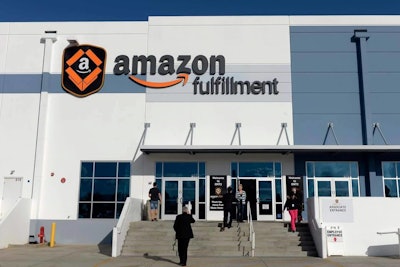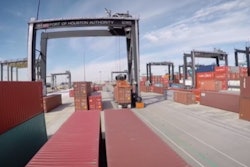
The rapid growth of e-commerce is fueling the development of warehouses and distribution centers in the 12 primary U.S. inland-port markets at nearly twice the national rate, according to a new report from CBRE Group Inc.
Even with the surge in construction, demand for industrial buildings in those markets is so robust that nine of the 12 saw their availability rates decline from their post-recession peaks faster than the national rate.
By far, the leading catalyst for the growth of inland ports is e-commerce, which is flooding U.S. seaports with an unprecedented volume of foreign cargo destined for markets across the U.S. That cargo is routed from seaports to nearby inland ports, which are major transportation hubs where cargo is handled, warehoused and broken into smaller batches for further distribution to consumers within that region.
“Inland ports account for more than half of the fastest growing industrial markets in the U.S. because they are key waystations in the national e-commerce distribution network,” said David Egan, CBRE’s head of industrial and logistics research in the Americas. “As online commerce continues to expand, more shippers, retailers and logistics firms will seek top-quality, big-box warehouses in the leading inland-port markets to serve as critical links in their supply chains.”
In the report, CBRE identifies the main inland ports in the U.S. based on their connection to major seaports, their transportation infrastructure and their close proximity to major population centers. Those are: southern California’s Inland Empire; Phoenix; Dallas/Fort Worth; Kansas City; Houston; St. Louis; Chicago; Memphis, Tennessee; Columbus, Ohio; Atlanta; Greenville, South Carolina; and eastern and central Pennsylvania.
Inland ports are defined as having a Class I rail connection to a major seaport and also having access to significant transportation infrastructure, be it rail, highway, waterway or a combination of the three.
Collectively, the 12 inland ports expanded their base of industrial properties by 2.7 percent in this year’s first quarter, far outpacing the national average growth rate of 1.6 percent, according to CBRE research. The fastest growing of the 12 were the Inland Empire (4.3 percent), Greenville (4.2 percent), Atlanta and Dallas/Fort Worth (both at 3.6 percent).
Meanwhile, even with their rapid growth, many of those markets can’t keep up with demand. The inland ports with the least availability are Chicago (6.6 percent), Kansas City (7.4 percent) and the Inland Empire (7.6 percent).
The CBRE report highlights three inland ports as representative of the category’s recent growth:
- Chicago, the largest U.S. inland port, registered a 26 percent increase in intermodal container shipments since 2000 to now handle more than 15 million 20-foot-equivalent units (TEUs) annually. The port's inbound and outbound traffic is expected to grow by double- and triple-digit percentages by 2040.
- The Greenville area, where an inland port opened in 2013, saw its cargo volumes grow by triple-digit percentages since then. Due in part to its growing manufacturing base and the nearby Port of Charleston, Greenville is emerging as one of the fastest growing industrial markets in the U.S.
- St. Louis, a leading river port, capitalizes on less expensive water transport to bring in shipments. That cargo then is distributed within a 500-mile radius of the port, including nearly one third of the U.S. population.
“Inland-port markets recovered faster than their non-port counterparts since the Great Recession,” said Scott Marshall, CBRE’s executive managing director of industrial and logistics in the Americas. “These markets will hold their edge because they have sustainable advantages in their infrastructure, access to population centers and connections to major seaports to benefit them for the foreseeable future.”












